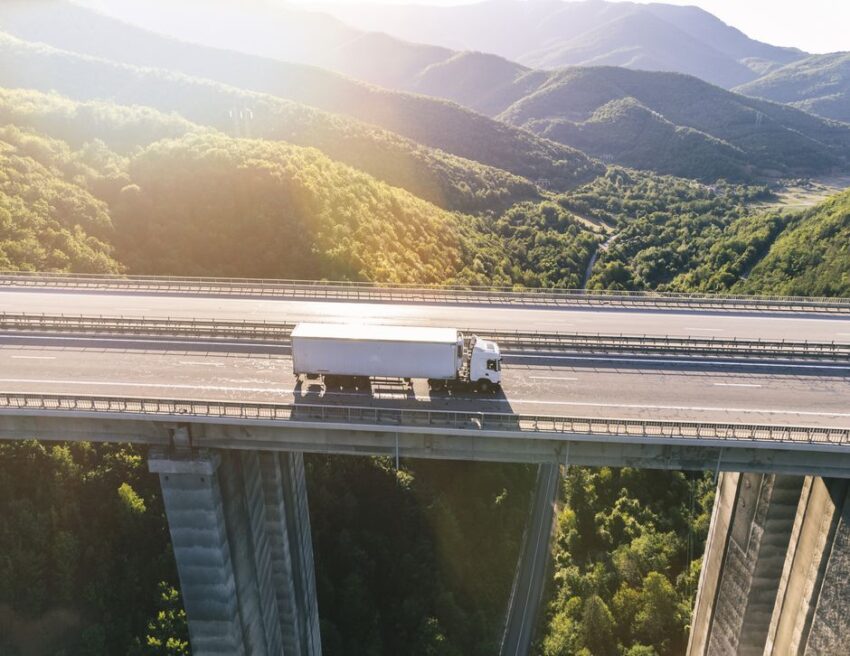
The challenges posed by the pandemic along with the stiff competition from multinationals have prompted the road freight industry to rethink its operations by embracing automation which is key to the digital transformation of this sector. Digital transformation is helping the trucking industry to survive in the face of competition and prepare itself better for any future disruption. In today’s post, we are going to talk about the challenges of the road freight industry and how it is preparing to cope with the emerging challenges.
The biggest challenges of the ground freight sector
-
The rising fuel prices
The sharp increase in fuel prices for more than a year is one important problem that the road freight industry is having to contend with. However, in this context, it is important to remember that chaos or radical change in the market, is a threat to someone and a chance for someone else. Companies that have sufficient capital, better technology, and so on will be able to have lower prices. This could indeed pose a problem for small and mid-sized trucking companies.
-
Shortage of drivers
The driver shortage in Europe and North America that has started since 2020 is still very much a threat to the trucking sector. According to the American Trucking Association, the driver’s shortfall could reach 160,000 by 2030. Similarly, the countries in the EU have a shortage of 425,000 transport operators and this number will rise by 14% by the end of this year. The reason behind the driver shortage is the high turnover rate of truck drivers, the pandemic, better job opportunities, and the difficulties that this profession entails. Moreover, self-driving trucks are not an answer to this situation since the human workforce will always be needed. According to forecasts, the 2024 volume difference is estimated to be up to 300,000 compared to available truck drivers.
-
Lack of digitization
Unclear order status, shipment delays, lack of transparency, and stolen goods are some of the issues which are relatively common in the road freight industry. A steady supply chain necessitates a quick flow of information across every level of the stakeholders. Data relating to the cargo status is crucial to the shipper to avoid and prepare for unwanted and unforeseen situations. This is where fleet management software and cargo tracking platforms come into the picture. These software can immensely speed up operations, provide insight into data, improve security and help with better customer service. However, implementing these digital changes is one of the big challenges in the trucking industry.
The need for digital transformation
Several trucking companies are still reluctant to adopt digitization due to fear of long-term investments. This is a crucial factor that is hindering the growth of small and mid-sized trucking companies and keeping them from realizing their fullest potential. It needs to be kept in mind that with successful digital transformation comes a return on investment.
Companies in the ground freight sector need to embrace the up-and-coming technologies for quick and effective execution of the delivery process. More importantly, automation is a proven way to keep a laser focus on the customers. Digitization can also help a great deal in reducing manual labour and keeping the workforce more engaged and productive.
Digitization of the trucking sector should ideally focus on four major areas – digitization and optimization of operations, cost optimization, network strategy and people management. Road freight companies should consider investing in online tools like route optimization and fleet management software for achieving automation and process optimization. In addition, supply chain predictive analytics tools can also help with the online management of drivers and other service providers across the company. The use of these tools can even help with predictive demand forecasting for additional workers during peak season, task allocation for the workforce, expense optimization, employee management, and end-to-end sourcing.
The future of the road freight industry in 2023
The use of route optimization software is making the sector more dynamic and resilient
Route planning or route optimization signifies the creation of effective delivery plans by using online platforms. Some of the obvious advantages of using route optimization software are reduced expenses, saving time and proper utilization of resources. Planning your route manually is a task that entails a lot of error since it is impossible to take all the factors into consideration while planning a route. Route planning software, on the other hand, uses complex algorithms for the optimization of delivery routes.
By planning the sequence of stops for the fleets they allow trucking companies to seamlessly conclude the delivery process. Additionally, while planning routes, the system takes various factors into account such as time frame, vehicle capacity, number of trucks in the fleet, weather conditions, historical traffic data and more. This allows the truck drivers to identify the fastest and most commercially viable route to reach the destination on time even with several stop-points. It takes the stress off the truck drivers thereby reducing accidents and allowing road freight companies to avoid delays.
The advent of self driving vehicles
Self-driving trucks are the next giant leap for the road freight industry. Autonomous trucks will reduce the environmental impact of the transportation and logistics industry and can even cut down transportation costs by up to 40%. These trucks are regular trucks that are operated by AI and machine learning technology and will not eventually require the presence of a driver. However, human monitoring of these trucks is imperative at the moment. Artificial Intelligence tracks several sources of data and collates them into a single pattern allowing the vehicle to drive on its own. It will still take several years before self-driving vehicles become a common sight on the highway. Nevertheless, with the pace at which technology is progressing, this technology will become more common within just a few more years.
The use of fleet management systems
In the coming months of 2023, we will see a vast number of trucking companies investing in the use of fleet management systems. These online tools help to monitor a fleet of vehicles with a special focus on maintenance, budgeting, and safety. Managing a vast fleet of trucks can be a challenging and tedious task and therefore streamlining this job with the help of automation has become a very popular option for the trucking companies. Companies of all sizes are making use of fleet management systems to manage their nationwide delivery services effectively while cutting down costs. The purpose of this tool is to control the complete lifecycle of the trucks so as to minimize risks and enhance productivity and profitability.
Fleet Management Systems can even help to enhance the safety of the drivers by including a video recording feature. They monitor the habits of the drivers to prevent accidents and enhance safety. Furthermore, its in-built GPS tracking tools allow logistics managers to keep track of every vehicle in real time and even redirect them whenever required. They also provide fleet managers with all the data needed to create a preventive maintenance schedule for the fleet. It includes data such as miles travelled, fuel usage, engine hours, etc that can be used to manage the maintenance cost of the fleet. Among other things, it also greatly helps to increase customer satisfaction by providing them with enhanced ETA accuracy via GPS tracking information.
Wrapping up
The future of the road freight industry is hands down the adoption of digitization which will eventually make way for greater asset utilization, increased visibility and improved customer service. Moreover, technology is also allowing for better fuel utilization which is of primary importance in our time when prices of fuel are skyrocketing. In other words, the elimination of manual processes is allowing the trucking companies to better focus on other tasks like finding new channels of business expansion. Lastly, better asset utilization will also lower the chances of vulnerabilities and untoward incidents.


